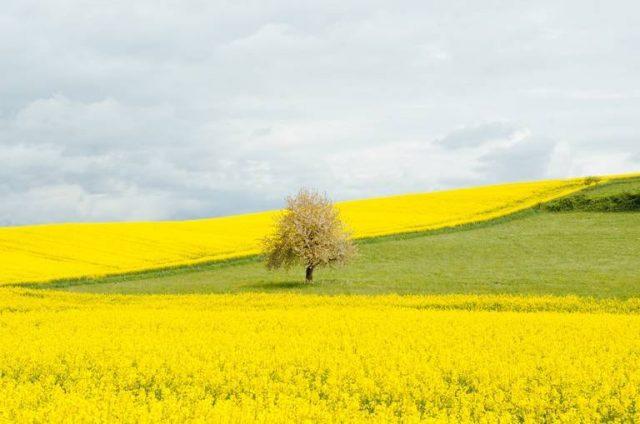Agriculture in the Anthropocene: The Challenge is the Solution
By Thomas Schueneman
Originally published on TriplePundit
“The ultimate goal of farming is not the growing of crops, but the cultivation and perfection of human beings.”
-Winston Churchill, The River War
And this isn’t the only challenge the agriculture sector faces in the coming decades. The world’s farmers not only must feed a growing population, but also cope with a rapidly changing climate.
Given the urgency of the climate crisis, agriculture is a big problem. Is it? Or is there another way to frame our outlook?
Farmers: on the front lines of climate change
Modern agriculture and land use are the second largest contributors to greenhouse gas emissions, right behind energy production.
The impacts on climate from agriculture are manifest. Carbon, methane, and N2O are the significant drivers. Especially N2O or nitrous oxide from fertilizer runoff and evaporation.
Farmers see the impacts of climate change every day. The deal directly with drought, floods, changing seasonal patterns, new pest infestation, and soil degradation.
Just as the agriculture sector directly impacts climate and environmental resilience, so too it can directly influence solutions to those impacts.
Putting agriculture on the table
Like energy production, agriculture is fundamental to human prosperity.
Unlike the energy sector, agriculture has largely been absent in the larger discussion of climate impacts and mitigation. This is not to say that climate and environmental impacts are not understood. But as Georgina Custin writes in Inside Climate News, not until the Paris Agreement, adopted over two chilly weeks in December 2015, that climate mitigation intersected on the global stage with agriculture.
“It’s become possible to finally discuss the elephant in the room,” Martin Frick of the UN Food and Drug Organization tells Custin in Inside Climate.
The impetus of this new focus on agriculture and land use stems largely from the Intended Nationally Determined Contributions. The INDCs are the core element of the Paris Agreement.
In the summary report Agriculture Sectors in the Intended Nationally Determine Contributions, the FAO summarizes:
The Food and Agriculture Organization of the United Nations (FAO) has analyzed the INDCs and found that the agriculture sectors (crops, livestock, forestry, fisheries, and aquaculture) feature prominently in meeting national mitigation contributions and adaptation objectives. This is a clear signal: the agriculture sectors are central to the response to climate change.
The flexibility of the INDCs propels agriculture, forestry, and land use (AFOLU) from relative obscurity into an important tool for climate mitigation. All sectors and all stakeholders must come to the table for any hope of living up to the promise of the Paris Agreement. Climate Smart agriculture sits at an exciting, if challenging, crossroads.
Monsanto and Climate Smart agriculture
“Collaboration is the essence of life. The wind, bees and flowers work together, to spread the pollen.”
– Amit Ray
On December 1, 2015, just as COP21 in Paris was getting underway, Monsanto committed to achieving operational carbon neutrality by 2021.
TriplePundit recently spoke with Jeff Seale, Agricultural Environmental Lead and Science Fellow for Monsanto about the company’s climate policy, partnerships, and pathways to Climate Smart solutions.
For Seale, it starts with the science.
“The science is sound,” says Seale “…We know that climate change is real. We know that [climate change] is bad for the environment, bad for agriculture, and poses a threat to people around the world.”
“We know it’s time for us to do whatever we can to mitigate that.”
Wait… Monsanto?
Monsanto is a global agricultural powerhouse. Once we agree on that, opinions get complicated. We shouldn’t ignore the controversy, but I won’t dwell on it here. TriplePundit’s Editor in Chief Jen Boynton says it best: “The knee-jerk reaction to Monsanto as the root of all evil is not sound thinking.”
“…we NEED everyone at the table if we’re going to solve global challenges and nourish 9 billion people in a warming world. And we don’t believe in bogeymen.”
Climate Smart collaboration
Monsanto’s strategy for Climate Smart Agriculture is collaborative. Internal methodologies and carbon pricing led holistically to application in the field.
“We work with our partners in a carbon neutral collaborative,” Seale says, “a group of outside experts in greenhouse gases, agricultural modeling, and (carbon) accounting.
“The right size, the right data, and the right economics.”
In future posts in this series, we dive deeper into specific Climate Smart solutions, from cover crops to GPS and database-driven precision farming.
But as important as best practices and technology are, Seale also emphasizes how important it is to take the long view, see the big picture.
Sustainable intensification
“It’s just a problem, and problems get solved.”
– Ian Faith, band manager for Spinal Tap (satirical)
I write this on a computer, “magically” linked to a global community through electromagnetic waves bouncing around the globe. Each generation considers itself the pinnacle of human progress.
But arguably the greatest technical achievements of our species lay in our ancient past. If not for taming fire and planting, any potential civilization, as we understand it, would have had no foundation upon which we could stretch to the stars or write on computers.
Climbing higher into the clouds, we are cautioned not to forget where we rest our feet.
After all, a person’s gotta eat.
Tom is the founder, editor, and publisher of GlobalWarmingisReal.com and the TDS Environmental Media Network. He has been a contributor for Triple Pundit since 2007. Tom has also written for Slate, Earth911, the Pepsico Foundation, Cleantechnia, Planetsave, and many other sustainability-focused publications. He is a member of the Society of Environmental Journalists.
Photo by Gabriel Garcia Marengo on Unsplash
Tom is the founder, editor, and publisher of GlobalWarmingisReal.com and the TDS Environmental Media Network. He has been a contributor for TriplePundit since 2007. Tom has also written for Slate, Earth911, the Pepsico Foundation, Cleantechnia, Planetsave, and many other sustainability-focused publications. He is a member of the Society of Environmental Journalists



